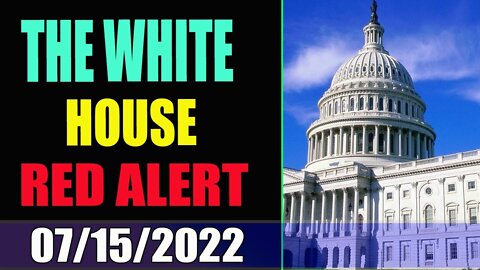Register for free to join our community of investors and share your ideas. You will also get access to streaming quotes, interactive charts, trades, portfolio, live options flow and more tools.
THOUSANDS Of Canadian Children Are DYING SUDDENLY! Fully Vaxxed &
BOOSTED Kids Unexpectedly DROP DEAD
The Prisoner
Published 6 hours ago
https://www.brighteon.com/a098e9cd-63f7-49b0-be1f-2297b346dbf5
278,000 Americans killed by the vaccine in the first year, notes Peter McCullough, MD
The Prisoner
https://www.brighteon.com/73ed6d8f-004b-416b-8041-5570047e5a74
BREAKING: Fully Vaccinated Adults Account for Over 90% of COVID-Related Deaths!
Posted on February 25, 2023 by Constitutional Nobody
Key Points:
https://ussanews.com/2023/02/25/breaking-fully-vaccinated-adults-account-for-over-90-of-covid-related-deaths/
JESUS PRAYERS Needed Against - NWO = OWG KHZARIAN DEEPSTATE EVIL - THE ILLUMINATI AND ONE WORLD
GOVERNMENT WARMONGLERS NECON NAZIS =
DEPOPULATION AGAINST ALL HUMANITY -
WATCH

The Illuminati and One World Government
From Genesis to the Tower of Babel, to the
Egyptian Pharaohs, to Goat God's, to the World Bank, and the
FreeMasons, Secret Societies, Rosicrucians,
Rothschild bloodline, sexual perversions,
Marxism, Communism, Illuminati, Evil 666 -
https://www.bitchute.com/video/wzXLOeEAGm1d/
JESUS PRAYERS THANKS - SITUATION UPDATE GCR REPORT 2/20: JFK JR DECODE! HARRIS STARTS WW3?! EPSTEIN/CHASE BANK REVEAL! WOW!
WATCH

https://www.bitchute.com/video/IdhwLuCqaUg6/
https://www.bitchute.com/video/JrOIjbfGtLKs/
TRUMP LIFTS SPIRITS IN EAST PALESTINE, OHIO, WHILE BIDEN RESTS FROM
BANGING THE WAR DRUMS IN UKRAINE
WATCH

https://www.bitchute.com/video/YST1BSDWdsRw/
WATCH = NWO KHAZARIANS MAFIA MURDER OUR BROTHERS & SISTERS AND THE HUMANITY -
SECRET ISRAELI AND PFIZER CONTRACT EXPOSED BY STEVE KIRSCH AND STEW
PETERS
WATCH

https://www.bitchute.com/video/0eh6vANp9pOj/
Pp Watch - STEW PETERS: MARXISTS HIJACKED AMERICA, WHO IS RUNNING THE UNITED STATES - 2/20/23
WATCH

https://www.bitchute.com/video/wTE2J0hekgIK/
Evil eugenics MAID in Canada: Socialist left's massive genocide disguised as medical care
Mirror. Source
Evil Eugenics MAID In Canada: Socialist Left's MASSIVE Genocide Disguised As Medical Care https://odysee.com/@TimTruth:b/canada-maid-genocide:1

https://www.bitchute.com/video/K4zArax8Es6v/
Quote: "Evil Eugenics MAID In Canada: Socialist Left's MASSIVE Genocide Disguised As Medical Care Want more videos? Join https://GroupDiscover.com to find the best videos from across the free speech internet platforms like Odysee, Rumble, Bitchute & Brighteon all in one huge video repository. Add me on these great platforms: https://rokfin.com/timtruth https://odysee.com/@TimTruth:b/ https://rumble.com/timtruth https://bitchute.com/timtruth/ https://GroupDiscover.com Support links (thank you to all the supporters!): Easy to do one time tips via https://rokfin.com/timtruth or https://odysee.com/@TimTruth:b https://timtruth.substack.com/subscribe https://subscribestar.com/timtruth "
-
5G is a weapon system - Don't be fooled by the fake narrative https://tinyurl.com/tf38xs3d ~ The agenda - They are destroying human kind https://tinyurl.com/2p82r3j9 ~ 60GHz in schools - Lena Pu and Mark Steele https://tinyurl.com/2c67ep66 ~ 5G target acquiring weapon system - This is not for control but an extermination technology https://tinyurl.com/4hetn32u ~ UK Government hacked https://tinyurl.com/337zjb4s ~ Report #133: David Noakes on GcMAF cancer treatments, FDA/MHRA/Pharma corruption, & wrongful charges https://tinyurl.com/ev8kms8n ~ BitChute { noakes falconscafe https://tinyurl.com/2h7z47ve } ~ The disciples of Ra: The deception of "medicine", viruses & vaccines https://tinyurl.com/2p8uc7as ~ Viruses don't exist https://is.gd/E4li0z ~ If you don't know what causes what they call a virus you will never know unless you read the science https://tinyurl.com/yj8j9pd2 ~ Assembling the kill grid ~ Excerpt: Mark Steele https://tinyurl.com/4cethr4b ~ Prof. Francis Boyle "The British must not take these frankenshots"! Interview https://tinyurl.com/3cbrwts2 ~ The MAC phenomenon in people "vaccinated" from COVID-19 https://tinyurl.com/2p8xhjz3 ~ Video summary of La Quinta Columna that shows evidence of genocide based on injectable analysis https://tinyurl.com/43bdk4na
Illegal organ trafficking of homeless people in Texas? Same thing happened during Hurricane Katrina https://tinyurl.com/ym7uyt3e ~ Homeless vet killing society https://tinyurl.com/y2ycpn6m ~ NATO satanism, testimony, Kay Griggs: Colonel's wife tell-all, oppression, deception, secret society https://tinyurl.com/2p8ybsjv ~ Horus matrix at Normandy Omaha Beach Overlord D-Day 666 Cemetery satanic ritual sacrifice https://tinyurl.com/yckjeu8r ~ The cover up continues - Share this with all vaccinated, who have been lied to by their doctors https://tinyurl.com/3w65f9ny ~ Whistleblower: Hospitals killing for organs, "This is absolutely evil and a crime against humanity!" https://tinyurl.com/4mp7h8vy ~ The world must know #PureEvil #HellOnEarth https://tinyurl.com/2p93msb3 ~ Bombshell: Pfizer vaccine study's massive list of "Adverse events of interest" https://tinyurl.com/yc7tyu2r
Did he just say snake venom? - Dr Bryan Ardis talks to Right Now https://tinyurl.com/4chrmwy8 ~ World premiere: Watch the Water https://tinyurl.com/3ybuwhxv ~ Part 1/3 - Dr. Bryan Ardis reveals bombshell origins of COVID, mRNA vaccines and treatments https://tinyurl.com/38earx4a ~ Biological weapons; Is there a link between the water supply system and the pandemic? https://tinyurl.com/2p8pvuze ~ Professor Darrel Hamamoto on persecution and inquisition at UC Davis https://tinyurl.com/4wkcjcu3 ~ The China-NHS lateral flow test, massive fraud, for those that lost work.. or murdered on COVID ward https://tinyurl.com/2mbamwmf ~ COVID-19 test fraud, also carcinogenic https://tinyurl.com/2p99uwws ~ Your future The SPARS pandemic 2025 - 2028 https://is.gd/kCajO1
Snuff Hill https://tinyurl.com/573ufnvj ~ Blood Hill https://tinyurl.com/ymckkptu ~ Fitzwilliam military cult https://tinyurl.com/bdhz7529 ~ Troy River https://tinyurl.com/2p86hv66 ~ Tent City https://tinyurl.com/56hfw4kf ~ 18 Brickyard Troy Depot, Troy School, Cemetery, Discount Tire, satanic stalking, ritual sacrifice https://tinyurl.com/2jvdutm2 ~ Bohemian Grove Jr, Bridgewater Associates - CIA corporate front, CIA role in snuff and pornography https://tinyurl.com/2p8v8yr5 ~ Hebron Coven ~ Part 1 to 4 of 9 https://tinyurl.com/yw952bnn ~ Body Organs Of Over 18,000 Syrian Children Sold in Six Years https://tinyurl.com/djarv3w8 ~ I saw kids in cages outside a masonic lodge being loaded into trucks https://tinyurl.com/46uxrvs5 ~ Amazon USB key - Part 1 to 2 - CYM Adrenochrome https://tinyurl.com/yckfvnn2
The men on the moon https://tinyurl.com/42dh2ejv ~ Moon truth https://tinyurl.com/mrxx5sks ~ 7 rockets hit dome ! https://tinyurl.com/46rd63v5 ~ Who shot the moon landing, classroom bloopers https://tinyurl.com/mw7xwh39
Oil is abundant and cheap https://tinyurl.com/3e2nkbbm
MAGA Prayers To Father GOD Needed - THE WORLD VS. THE KHAZARIAN MAFIA -- JIM WILLIE
WATCH

https://www.bitchute.com/video/PSIN2glcoaju/
Watch MAGA Thanks - Pray To Get Father GOD'S Remedies Back To US - ROCKEFELLER INFLUENCED THE WORLD TO REMOVE ALL THE NATURAL
REMEDIES FROM PRACTICE FOR HIS BENEFIT
WATCH

https://www.bitchute.com/video/uD36QiNCxC8O/
China Says Ready To "Join Forces With Russia" To "Defend National Interests" As Putin Confirms Xi Visit
Tyler Durden's Photo
BY TYLER DURDEN
WEDNESDAY, FEB 22, 2023 - 10:00 AM
Despite all latest among Washington's repeat warnings to Beijing against strategic or military cooperation with Moscow, China is now pledging to "join forces" with "like-minded" partner Russia to defend national interests. The statement came by the close of the first day of the director of the Office of the Foreign Affairs Commission of the Communist Party of China’s Central Committee Wang Yi's trip to Moscow.

https://www.zerohedge.com/geopolitical/china-says-ready-join-forces-russia-defend-national-interests-putin-confirms-xi-visit
CH - TOXIC FUMES FROM OHIO MAY SERIOUSLY AFFECT EVERYONE EAST OF THE MISSISSIPPI RIVER 250 MILLION PEOPLE
WATCH

https://www.bitchute.com/video/hCb5IvRRkL7G/
$500 TRILLION LAWSUIT AGAINST THE FEDERAL GOVT AND OVER 140 MONOPOLISTS (REMOVED BY YOUTUBE IN 5HRS)
WATCH

https://www.bitchute.com/video/QFcfDjifRl6u/
Even the doctors fell for it
https://rumble.com/v2aenx2-more-than-130-canadian-doctors-have-died-suddenly-since-c19-killshots-began.html
5G – Microwave as a weapon Part 2 - Dr. Reiner Fuellmich and Barrie Trower https://rumble.com/v2a3th8-5g-microwave-as-a-weapon-part-2- dr.-reiner-fuellmich-and-barrie-trower.html | Towards The Light channel https://www.bitchute.com/cha…

https://www.bitchute.com/video/RaEZsuhWr2G0/
NWO Biden like a 3 year old -

FC; Situation Update ~ World War III and the Imminent Collapse of the US Dollar.
Situation Update Published July 16, 2022

https://rumble.com/v1ci0qj-situation-update-world-war-iii-and-the-imminent-collapse-of-the-us-dollar..html
JUDY BYINGTON INTEL: RESTORED REPUBLIC VIA A GCR HUGE UPDATE AS OF JULY 16, 2022 - TRUMP NEWS
Trump News Channel Published July 16, 2022

https://rumble.com/v1chjk7-judy-byington-intel-restored-republic-via-a-gcr-huge-update-as-of-july-16-2.html
UPDATES COMING IN THE NEXT 24H - DONALD TRUMP INITIATED A CONTINUITY OF GOVERNMENT PLAN
Trump News Channel Published July 15, 2022

https://rumble.com/v1ce91j-updates-coming-in-the-next-24h-donald-trump-initiated-a-continuity-of-gover.html?mref=6zof&mrefc=8
Clif High: The Jabbed Are About To Get A Rude Awakening!
Patriot Movement Published July 15, 2022

https://rumble.com/v1ceigp-clif-high-the-jabbed-are-about-to-get-a-rude-awakening.html
BIG SITUATION SHOCKING NEWS & JUDY BYINGTON INTEL UPDATE TODAY 07/11/2022 - TRUMP NEWS
Trump News Channel Published July 15, 2022

https://rumble.com/v1ce7lv-big-situation-shocking-news-and-judy-byington-intel-update-today-07112022-t.html
PRESIDENT DONALD J. TRUMP LIVE FROM PRESCOTT, AZ JULY 22ND, 2022
by RSBN Studio
07/13/22
President Donald J. Trump, 45th President of the United States of America, will be
joined by endorsed candidates, members of the Arizona congressional delegation,
and other special guests on Saturday, July 22, 2022, in Prescott Valley, AZ.
This Save America rally is a continuation of President Trump’s unprecedented effort
to advance the MAGA agenda by energizing voters and highlighting America First candidates and causes.
((( Saturday, July 22, 2022, at 4:00 PM MST )))
President Donald J. Trump, 45th President of the United States of America, Delivers Remarks
https://www.rsbnetwork.com/video/president-donald-j-trump-live-from-prescott-az-july-16th-2022/?mc_cid=d10c22f780&mc_eid=a19c8148b2
Venue:
Findlay Toyota Center
3201 Main St.
Prescott Valley, AZ 86314
Special Guest Speaker:
Kari Lake, Trump Endorsed Candidate for Governor of Arizona
Blake Masters, Trump Endorsed Candidate for U.S. Senate in Arizona
Abe Hamadeh, Trump Endorsed Candidate for Attorney General of Arizona
State Rep. Mark Finchem, Trump Endorsed Candidate for Secretary of State of Arizona
and State Representative from Arizona’s 11th District
Sheriff Mark Lamb, Pinal County Sheriff
Kelli Ward, Chairwoman of the Republican Party of Arizona
Mike Lindell, Inventor and CEO of My Pillow
Timeline of Events:
6:00AM – Parking and Line Opens
11:00AM – Doors Open and Entertainment Begins
1:00PM – Special Guest Speakers Deliver Remarks
4:00PM – 45th President of the United States Donald J. Trump Delivers Remarks
General Admission Tickets:
REGISTER HERE
Request Media Credentials:
REGISTER HERE
All requests for media credentials must be submitted by Thursday, July 14, 2022, at 4:00PM MST.
https://www.rsbnetwork.com/video/president-donald-j-trump-live-from-prescott-az-july-16th-2022/?mc_cid=d10c22f780&mc_eid=a19c8148b2
CDD; SOUND THE ALARM! DECISION SOON? DURHAM MOVES! BIDEN EXPOSURE! NATO EXPOSED! NOW! PRAY!
Trump News Channel Published July 15, 2022

https://rumble.com/v1ce6ot-7.14.22-sound-the-alarm-decision-soon-durham-moves-biden-exposure-nato-expo.html
Are Corrupt Feds Distracting Us From The Truth About Everything? | Justinformed News
Patriot Movement Published July 15, 2022

https://rumble.com/v1cbzon-are-corrupt-feds-distracting-us-from-the-truth-about-everything-justinforme.html
ATTENTION! Dr. 'Judy Mikovits' "WARNING TO HUMANITY" 'David Nino Rodriguez' Interview
AndreCorbeil Published July 12, 2022

https://rumble.com/v1c1qal-attention-dr.-judy-mikovits-warning-to-humanity-david-nino-rodriguez-interv.html
US Navy Revolt Slams Biden Secret Plot To Oust Over 500,000 Troops
https://www.whatdoesitmean.com/index3977.htm
Iran Plotting to Assassinate Trump and Pompeo in Revenge for Soleimani Killing, US Intel Leak Shows
David HawkinsJuly 14, 20222 Comments
https://slaynews.com/news/us-intel-leak-says-iran-plotting-to-assassinate-donald-trump-and-mike-pompeo-in-revenge-for-soleimani-drone-strike/
2000 MULES BY DINESH D’SOUZA DOCUMENTARY - best news here
This is the official 2000 Mules movie.“2000 Mules,” a documentary film created
by Dinesh D’Souza, exposes widespread, coordinated voter fraud in the 2020
election, sufficient to change the overall outcome. Drawing on research provided
by the election integrity group True the Vote, “2000 Mules” offer..
https://bestnewshere.com/2000-mules-by-dinesh-dsouza-documentary/
THE EU FINALLY ADMITS THE VACCINE DESTROYS YOUR IMMUNE SYSTEM COMPLETELY - TRUMP NEWS
Trump News Channel Published July 10, 2022

https://rumble.com/v1bqnvt-the-eu-finally-admits-the-vaccine-destroys-your-immune-system-completely-tr.html
$CH Excellent Video Thanks;
https://live.aflds.org/
God Bless America
Amen
Canada Truckers Thanks; TRUDEAU'S BROTHER SLAMS JUSTIN AND THE FAKE PANDEMIC - TELLS JUSTIN TO GIVE IT UP, STOP LYING
February 4th, 2022
https://www.bitchute.com/video/qhuIqAD6V1dT/
https://investorshub.advfn.com/boards/read_msg.aspx?message_id=167762690
DEATH SHOTS: Nearly half a million spontaneous abortions have been caused by covid “vaccines”
Tuesday, February 01, 2022 by: Ethan Huff
https://www.naturalnews.com/2022-02-01-half-million-spontaneous-abortions-caused-covid-vaccines.html#
LET'S HELP THE CANADIANS DEFEAT THE MANDATES
Facebook has spent all week banning groups related to the peaceful
Canadian Trucker Convoy as well as any groups working to organize the
American Convoy.
It's interesting that Facebook would ban these groups and yet did
nothing to ban the Black Lives Matter groups that organized to burn
down our cities a few years ago.
In light of these bannings the truckers have set up groups on Gab to
communicate with the world during their protest.
You can click here to find the American Freedom Convoy group on Gab.
https://gab.com/groups/59447
You can follow the offical Trucker Convoy account here.
https://gab.com/truckerconvoy2022
Finally you can join the Canadian Trucker Convoy group here which has
coverage from people on the ground.
https://gab.com/groups/59218
People are quickly learning that Gab is the only place they can find
information about this peaceful protest and real time updates from
those who are attending it.
GOFUNDME FREEZES FREEDOM CONVOY'S $10M, GOVERNMENT DECLARES INTENT TO SEIZE MONEY, HONK HONK
https://www.bitchute.com/video/k5ODqT8FKM4E/
CANADA WANT FREEDOM CONVOY CANADA 2022 - MUSIC VIDEO COMPILATION
22,054 viewsJan 28, 2022
JAIL FOR ALL WHO HAVE IMPOSED THIS SICKNESS
https://rathcocovidlitigation.com/wp-content/uploads/2021/11/2021-11-16-LT-Trudeau-et-al-re-Pfizer-Vaccine1.pdf
Very interesting Judge Joe Brown
16 DAY FORECAST -- WARNING ZONES
https://www.brighteon.com/e573a7ad-0cf5-4cc0-a6db-3c4cfa9eb655
UPDATE: Delaware County Pennsylvania Lawsuit Is Going to Blow the Roof Off of the Democrat Voter Fraud in the State
https://www.thegatewaypundit.com/2021/11/update-delaware-county-pennsylvania-lawsuit-going-blow-roof-off-democrat-voter-fraud-state/
Watch "NWO Biden deep state Admin Suspends Vaccine Mandate — But The Fight Is
Just Beginning" on YouTube
I try not to tweet on the weekends, but this is just spectacular. https://t.co/uPNB5aoTte
— Dave Rubin (@RubinReport) October 30, 2021

Western Canada, Port of Vancouver CLOSES as BC flooding damages rail & roads
https://www.brighteon.com/62232bbb-faeb-4646-a67b-57ece9323937
HAARP ( PT. 2) Weather As A WEAPON In 2025 [Mouthy Buddha]
https://www.brighteon.com/cdc1e7a5-a411-4453-bf42-13bacf23f15a
CALI FOREST FIRES - HOMELESS GUY STORY NO LONGER WORKS
IF THEY ARE USING ARSON DRONES TO START THE FIRES - WEAPONS OF MASS
DISTRACTION! FROM THE NWO GOF BIO WEAPON ZOMBIE VAXX GENOCIDE GOING ON
https://www.brighteon.com/4f4d2f22-0e85-436a-b778-518a97898512
HARRP - NWO Makes Earthquakes, Forest Fires, Floods, Volcanos, All Can Be Made...
1460 views
channel image
Themoreuknow
https://www.brighteon.com/8f8465d3-4171-4e4a-af2a-278b0aa8adff
Stew Peters: UV Light Fixtures Would END COVID TYRANNY, Available NOW!
[19.10.2021]
2080 views
Kim Osbøl - Copenhagen Denmark
https://www.brighteon.com/9520790f-e443-4340-b6eb-e25bd9bd6e6e
https://www.frontpagemag.com/fpm/2021/10/california-drove-truckers-out-business-now-store-daniel-greenfield/
Media didn’t disclose doctor’s $2M in Pfizer funding in coverage promoting child vaccination
Ex...
https://tnc.news/2021/10/28/media-didnt-disclose-doctors-2m-in-pfizer-funding-in-coverage-promoting-child-vaccination/
Study: Fully Vaccinated People Can Spread COVID-19
https://www.newsmax.com/health/health-news/covid-vaccinated-unvaccinated-spread/2021/10/29/id/1042529/?ns_mail_uid=660faead-0eea-4bab-b2c6-5899e87309f1&ns_mail_job=DM268246_10292021&s=acs&dkt_nbr=0105021wkozj
iel-greenfield/
RUMOR IN ROME': NWO BIDEN Pawn HAD AN ACCIDENT AT THE VATICAN - #POOPYPANTSBIDEN NOW TRENDING ON TWITTER
WATCH
https://www.bitchute.com/video/XalSfjcptibj/
https://www.bitchute.com/channel/Whuei2DGmgBn/
EXCLUSIVE INTERVIEW WITH DONALD TRUMP
WATCH
https://www.bitchute.com/video/IUeMqU3x638r/
This is just spectacular.
I try not to tweet on the weekends, but this is just spectacular. https://t.co/uPNB5aoTte
— Dave Rubin (@RubinReport) October 30, 2021

ALERT: Seattle Has Fallen ???
By Staff Writer
October 29, 2021
https://thebeltwayreport.com/2021/10/seattle-has-fallen-as-cops-walk-out/
TRUMP TO HOLD TELE-RALLY MONDAY FOR VIRGINIA GOV. CANDIDATE YOUNGKIN
WATCH
https://www.bitchute.com/video/Vqxvc8nEQNrj/
https://www.bitchute.com/channel/Hqtv2yQyV4fR/
https://investorshub.advfn.com/boards/read_msg.aspx?message_id=166569125
Hedges: The Most Important Battle for Press Freedom in Our Time
https://scheerpost.com/2021/10/28/hedges-the-most-important-battle-for-press-freedom-in-our-time/
Abbott Activates National Guard To Secure Southern Border From INVASION
https://rumble.com/voeyu1-abbott-activates-national-guard-to-secure-southern-border-from-invasion.html?mref=6zof&mc=dgip3&utm_source=newsletter&utm_medium=email&utm_campaign=Dinesh+D%27Souza&ep=2
Horowitz: Irish county with 99.7% vaccination rate has highest COVID case rate.. :+O
https://www.theblaze.com/op-ed/horowitz-irish-county-with-99-7-vaccination-rate-has-highest-covid-case-rate
Media didn’t disclose doctor’s $2M in Pfizer funding in coverage promoting child vaccination
https://tnc.news/2021/10/28/media-didnt-disclose-doctors-2m-in-pfizer-funding-in-coverage-promoting-child-vaccination/
***Doctor on FDA panel says only way to learn about COVID vaccine effects in children is to 'start giving it'.. :+O
https://www.theblaze.com/news/doctor-fda-panel-covid-vaccine-effects-in-children
***Emergency Rooms across America being swamped by post-vaccine patients suffering organ failure.. :+O
https://www.brighteon.com/0b12e476-5181-40f9-b43d-47b92e766296
Interesting data linked from Sidney Powell's website:
https://theexpose.uk/2021/10/29/fully-vaccinated-82-percent-deaths-66-percent-hospitalisations-in-england/
John Horgan announced this week that he had been in and out of the hospital
for tests after noticing a lump on his neck and the surgery would reveal
what he’s dealing with, though he intends to stay on the job.
He said; he is double-jabbed too....
https://vancouversun.com/news/local-news/star-trek-actor-wishes-b-c-premier-warp-speed-recovery-after-biopsy-surgery/wcm/cde04f2b-bed7-442d-a6af-289d038523e4/amp/
https://vancouversun.com/news/local-news/star-trek-actor-wishes-b-c-premier-warp-speed-recovery-after-biopsy-surgery
Btw.
Government Overreached in COVID-19 Response, Class Action Lawsuit Asserts
https://ca.topclassactions.com/covid-19-coronavirus/966323-b-c-government-overreached-in-covid-19-response-class-action-lawsuit-asserts/
EXCLUSIVE: Former Premier of British Columbia Bill Vander Zalm on COVID-19(84) And The Push For GLOBAL COMMUNISM!!
by Press For Truth
October 18th 2021, 5:00 pm[color=red][/color]
https://www.infowars.com/posts/exclusive-former-premier-of-british-columbia-bill-vander-zalm-on-covid-1984-and-the-push-for-global-communism/
LIBERTY LANTERN RELAY UNITE THE LIGHT
WATCH
https://www.bitchute.com/video/cDKdZ15S5iJT/
DR.SHIVA LIVE: RACISTS UNLEASH SMEAR CAMPAIGN TO CONCEAL ANOMALIES
UNCOVERED IN MARICOPA AUDIT.
WATCH
https://www.bitchute.com/video/Tbq4eCOJrlXT/
BREAKING: 138 Legislators from 38 States Write a Letter to the American
People Calling for a 50-State Audit, Decertification Where Appropriate,
and Possible Convening of the US House of Representatives
Oct 15, 2021

BREAKING: 138 Legislators from 38 States Write a Letter to the American People Calling for a 50-State Audit, Decertification Where Appropriate, and Possible Convening of the US House of Representatives pic.twitter.com/ksv1OiEW9C
— Wendy Rogers (@WendyRogersAZ) October 15, 2021
Learn Why Israel Banned 5G After Inventing It
https://madashellnews.com/2019/11/22/learn-why-israel-banned-5g-after-inventing-it/
HAARP ( PT. 2) Weather As A WEAPON In 2025 [Mouthy Buddha]
https://www.brighteon.com/cdc1e7a5-a411-4453-bf42-13bacf23f15a
CALI FOREST FIRES - HOMELESS GUY STORY NO LONGER WORKS
IF THEY ARE USING ARSON DRONES TO START THE FIRES - WEAPONS OF MASS
DISTRACTION! FROM THE NWO GOF BIO WEAPON ZOMBIE VAXX GENOCIDE GOING ON
https://www.brighteon.com/4f4d2f22-0e85-436a-b778-518a97898512
HARRP - NWO Makes Earthquakes, Forest Fires, Floods, Volcanos, All Can Be Made...
1460 views
channel image
Themoreuknow
https://www.brighteon.com/8f8465d3-4171-4e4a-af2a-278b0aa8adff
Stew Peters: UV Light Fixtures Would END COVID TYRANNY, Available NOW!
[19.10.2021]
2080 views
Kim Osbøl - Copenhagen Denmark
https://www.brighteon.com/9520790f-e443-4340-b6eb-e25bd9bd6e6e
https://www.frontpagemag.com/fpm/2021/10/california-drove-truckers-out-business-now-store-daniel-greenfield/
Media didn’t disclose doctor’s $2M in Pfizer funding in coverage promoting child vaccination
Ex...
https://tnc.news/2021/10/28/media-didnt-disclose-doctors-2m-in-pfizer-funding-in-coverage-promoting-child-vaccination/
Study: Fully Vaccinated People Can Spread COVID-19
https://www.newsmax.com/health/health-news/covid-vaccinated-unvaccinated-spread/2021/10/29/id/1042529/?ns_mail_uid=660faead-0eea-4bab-b2c6-5899e87309f1&ns_mail_job=DM268246_10292021&s=acs&dkt_nbr=0105021wkozj
HAARP ( PT. 2) Weather As A WEAPON In 2025 [Mouthy Buddha]
https://www.brighteon.com/cdc1e7a5-a411-4453-bf42-13bacf23f15a
Media didn’t disclose doctor’s $2M in Pfizer funding in coverage promoting child vaccination
Ex...
https://tnc.news/2021/10/28/media-didnt-disclose-doctors-2m-in-pfizer-funding-in-coverage-promoting-child-vaccination/
Study: Fully Vaccinated People Can Spread COVID-19
https://www.newsmax.com/health/health-news/covid-vaccinated-unvaccinated-spread/2021/10/29/id/1042529/?ns_mail_uid=660faead-0eea-4bab-b2c6-5899e87309f1&ns_mail_job=DM268246_10292021&s=acs&dkt_nbr=0105021wkozj
Government Overreached in COVID-19 Response, Class Action Lawsuit Asserts
https://ca.topclassactions.com/covid-19-coronavirus/966323-b-c-government-overreached-in-covid-19-response-class-action-lawsuit-asserts/
Three Recent Volcanic Eruptions Confirmed on the Garibaldi Lake Volcano in Canada!
9,121 views Oct 29, 2021
Buffalo the new forming country - Western Canada on the merge of separation
31,306 views•Oct 23, 2019
RemT Studio
330 subscribers
Canada A Country Divided
2,596 views•
Oct 24, 2019
Context Beyond the Headlines
3.62K subscribers
The west wants out": Separatist sentiments growing in Alberta
188,189 views•Sep 25, 2019
4.5K
CTV News
257K subscribers
Albertans feel they don’t have a future in Canada: Former Encana CEO
55,194 views•Oct 25, 2019
1.4K
BNN Bloomberg
17.3K subscribers
DON'T LET CHINA NWO DESTROY CANADA AS CHINA WANT TO DO TO HONG KONG -
- Keep Canada Great - Ex. DO NOT GIVE AWAY CANADA'S OIL -
- FOR CANADA DESTRUCTION -
- TO FEED WWIII -
- TO DESTROY CHRISTIAN AND -
- TO SUPPLY COMMUNISTIC anti-Christ -
- NWO 666 WAR ON WESTERN SOCIETIES -
https://investorshub.advfn.com/boards/read_msg.aspx?message_id=149538752 …
God Bless America
H A A R P is Changing our Weather and Killing Millions Around the World -
http://www.youtube.com/watch?v=0YRo2Q0MPCM
.jpg)
Canadian Banksters Fraud Exposed -
Bill Abram
Unions need to be independent from all the parties and do what's best for workers
http://therealnews.com/t2/index.php?option=com_content&task=view&id=31&Itemid=74&jumival=7348
Quebec Election Gives Students a Victory on Tuition Hikes, Fight for Free Education Continues
http://therealnews.com/t2/index.php?option=com_content&task=view&id=31&Itemid=74&jumival=8286&gclid=CIaZlcq5ybICFQWCQgodQQ4Ajw
http://therealnews.com/t2/index.php?option=com_content&task=view&id=837
Quebec Election Gives Students a Victory on Tuition Hikes, Fight for Free Education Continues
http://therealnews.com/t2/index.php?option=com_content&task=view&id=31&Itemid=74&jumival=8286&gclid=CIaZlcq5ybICFQWCQgodQQ4Ajw
http://therealnews.com/t2/index.php?option=com_content&task=view&id=837
Premier Celebrates Gold Rush in Barkerville
List of Fema Camps Here
No to Austerity and Repression! No to militarism in Canada
Peace Congress condemns Quebec's anti-protest law, supports the rights of Quebec students
by Canadian Peace Congress
http://globalresearch.ca/index.php?context=va&aid=31479
The issues of peace, withdrawal from Afghanistan and NATO, and
slashing military spending and militarization, must be raised
as part of the broader struggle against this repression.
Defiance of Bill 78 is a test of strength:
the movement developing around the Quebec student strike has
the kind of unity and mobilization required
to stop Canada's wars for imperialism.
The Canadian Peace Congress calls on all peace organizations
to bring attention to the dangers of Bill 78 so that
it can be defeated, and to provide solidarity
to the student strike in Quebec.
Canadian Peace Congress Executive Council
June 17, 2012
Canadian Peace Congress
125 Brandon Avenue, Toronto, ON M6H 2E2
c a n a d i a n p e a c e c o n g r e s s . c a
Welcome to CanadianPeaceCongress.ca!
http://www.canadianpeacecongress.ca/
No to Austerity and Repression!
Peace Congress condemns Quebec's anti-protest law, supports the rights of Quebec students
An Urgent Message to All Canadians -
Governments are now one of the least trusted institutions -
http://www.integritybc.ca/newsroom/recommended-reading/206-barometer
Canada's Political Outsiders -
http://www.themarknews.com/articles/7709-canada-s-political-outsiders
The Energy Non-Crisis lecture with:
PT 1-8 Pastor Lindsey Williams: The Energy Non Crisis -
I believe your right about Canada as in;
they probably haven't introduced 100s of new law bills in
the last few years to remove all Constitutional Rights for
THE PEOPLE!
And,
Health Canada don't like what American companies like Monsanto
and our Government are doing as in this -
Video about 2 minutes 15 seconds in to about 3:10
The Underground Railroad In Canada -
Who really runs BC?
Mayors show real wisdom on ending marijuana prohibition -

http://blogs.theprovince.com/2011/11/23/editorial-former-mayors-show-real-wisdom-on-ending-marijuana-prohibition/
Medical marijuana law under review -
Current law pits doctors against patients and creates backlogs,
critics say
By David McKie, CBC News Posted: Sep 28, 2011 12:54 PM ET Last
Updated: Sep 28, 2011 4:43 PM ET Read 391 comments391
The judge also cited a study that concluded there are about 400,000 medical
marijuana users in Canada, which he concluded was "most likely an underestimate."
That number is hard to verify, as neither Health Canada nor the CMA
tracks individuals who are unable to find a doctor willing
to sign declaration forms.
A very well built documentary about cannabis and drug prohibition.
Does the drug prohibition work? Have a look and think for yourself.
http://video.google.com/videoplay?docid=-9077214414651731007#
Medical marijuana law under review
Current law pits doctors against patients and creates backlogs, critics say
By David McKie, CBC News Posted: Sep 28, 2011 12:54 PM ET Last Updated: Sep 28, 2011 4:43 PM ET Read 391 comments391
Legalize pot, Thunder Bay mayor says
INSIDE POLITICS: More on the medical pot case
BACKGROUND: Battle over medical marijuana
Crime bill cracks down on drug, sex offences
Ottawa to tighten medical marijuana rules
CMA's letter to Health Minister Leona Aglukkaq
2010 Health Canada briefing note
R v Mernagh: Read the judge's ruling
A demonstrator smokes marijuana on Parliament Hill in April, 2010,
at an annual protest calling for the decriminalization of marijuana.
Health Canada is holding talks on changes to Canada's medical
marijuana access regulations.
Pawel Dwuli/Canadian Press
Health Canada began two days of closed-door talks Wednesday
about changes to the controversial medical marijuana law that
has faced legal challenges and criticism for being ineffective.
http://www.cbc.ca/news/politics/story/2011/09/28/pol-mckie-medical-marijuana-talks.html
In order to stop cellular malfunction, you must first stop poisoning your body with the toxins that are causing it. This means limiting your consumption of trans fats, refined white flour and sugar and pharmaceutical drugs, as well as limiting your exposure to environmental and emotional toxins. For more information on the metabolic disruptors in your refrigerator that might be making you sick, see the Health Ranger Mike Adams' book, Grocery Warning, available from Truth Publishing. Then, once you stop adding to the problem, you must also detoxify and remove the agents that are already wreaking havoc on your cells. Following a raw foods diet is a great way to do this, according to Dr. Tunsky. If you think it would be too difficult to incorporate raw foods into your busy lifestyle, be sure to visit Karen Kevala Parker's informative web site Raw Food for Real People for tips on going raw. Defeating cellular malfunction is the key to preventing illness and disease while restoring your body to its greatest functional potential.
//a.sc.msn.com/c/my/err/en-US/offline.htm
http://investorshub.advfn.com/boards/read_msg.aspx?message_id=63045751
God Bless
Ps.
Cancer notes:
http://investorshub.advfn.com/boards/board.aspx?board_id=13807
http://investorshub.advfn.com/boards/read_msg.aspx?message_id=67557469
Timeline of the Afghan Mission:2001 2002 2003 2004 2005 2006 2007 2008 2009 2010 2011 -
http://afghanistan.nationalpost.com/
Canadian bank bailout total touches $186 billion -
http://www.wellingtonfund.com/blog/2010/12/02/canadian-bank-bailout-total-touches-186-billion/#axzz1cBItlYGs
Canada's 75 Billion Dollar Bank Bailout -
http://www.globalresearch.ca/index.php?context=va&aid=12007
- that's the peoples money given to the 666 banksters -
- the biggest crime in the history against the 888 people!
The super red banksters cults -
Rothschilds World Part 1 "Glen, Rush, Michael...Here's to you boy's"
Canada's 75 Billion Dollar Bank Bailout -
http://www.globalresearch.ca/index.php?context=va&aid=12007
- that's the peoples money given to the 666 banksters -
- the biggest crime in the history against the 888 people!
The super red banksters cults -
Rothschilds World Part 1 "Glen, Rush, Michael...Here's to you boy's"
Canada's 75 Billion Dollar Bank Bailout -
http://www.globalresearch.ca/index.php?context=va&aid=12007
- that's the peoples money given to the 666 banksters -
- the biggest crime in the history against the 888 people!
The super red banksters cults -
Rothschilds World Part 1 "Glen, Rush, Michael...Here's to you boy's"
Canada's 75 Billion Dollar Bank Bailout -
http://www.globalresearch.ca/index.php?context=va&aid=12007
- that's the peoples money given to the 666 banksters -
- the biggest crime in the history against the 888 people!
Canada's 75 Billion Dollar Bank Bailout -
http://www.globalresearch.ca/index.php?context=va&aid=12007
- that's the peoples money given to the 666 banksters -
- the biggest crime in the history against the 888 people!
Canada's 75 Billion Dollar Bank Bailout -
http://www.globalresearch.ca/index.php?context=va&aid=12007
- that's the peoples money given to the 666 banksters -
- the biggest crime in the history against the 888 people!
Canada's 75 Billion Dollar Bank Bailout -
http://www.globalresearch.ca/index.php?context=va&aid=12007
- that's the peoples money given to the 666 banksters -
- the biggest crime in the history against the 888 people!
Canada's 75 Billion Dollar Bank Bailout -
http://www.globalresearch.ca/index.php?context=va&aid=12007
The Bank Bailout Lie--Dylan Ratigan Speaks the Truth -
Canada's 75 Billion Dollar Bank Bailout -
http://www.globalresearch.ca/index.php?context=va&aid=12007
Fall Of The Republic - The Presidency Of Barack H Obama -
The Full Movie HQ -

Canada: Destroying Its Own History
http://www.thetrumpet.com/index.php?q=6545.5024.0.0
http://www.thetrumpet.com
Canadian Concentration Camps
Research: The Canadian Concentration Camps.
After the bombing of Pearl Harbor in the United States,
the Canadian government passed the "Order in council PC ...
http://www.masumihayashi.com/html/canada.html
POINT OF RESISTANCE - N* O* W* - TELL THE INSPECTORS WHAT YOU THINK AS THEY VIOLATE YOUR HOME -
Challenge the Smoke Alarm Inspectors,
B.C. Government Attacks Free Speech,
Newt Gingrich’s Real Agenda
May 3, 2009 - Oath Keepers, Ignatieff, Swine Flu, NATO vs. Pirates, Climate Change, Other News & Opinions
Oath Keepers: Orders We Will Not Obey
http://canadianliberty.com/
http://canadianliberty.com/?tag=canadian-firearms-institute
The Communist (666bolshevik) Takeover Of America by the 666evilz - 45 Declared Goals
http://www.rense.com/general32/americ.htm -
http://www.ronpaul.com/
http://www.ronpaul.com/on-the-issues/
Western Canada - Colonial North America -

The First Church in America -
|

First Church in Western Canada, Yale Town, B.C., -
31187 Douglas Street, Yale, BC.
Description of Historic Place:
The Church of St. John the Divine is an unadorned, simple wood-framed Gothic Revival style Anglican church located on the corner of Douglas and Albert Streets in the town of Yale, BC. The historic place is comprised of the church and its grounds, including the foundations of the former rectory and a large specimen copper beech tree.
Heritage Value:
Constructed around 1863 as a Church of England, the Church of St. John the Divine is a significant reflection of the establishment of British social and religious institutions in colonial British Columbia. The church also has a significant historical value as an early centre for Anglican missionary work in the Fraser Canyon. The Church of St. John the Divine provided religious, social, and medical services, as well as formal education, to members of the local First Nation.
The Church of St. John the Divine is also valued as one of the oldest surviving churches in British Columbia. The location of the church on its original lot and its surrounding landscape features - such as the stone foundation of the former rectory and the specimen copper beech tree - provide valuable context of the town of Yale as it was during its heyday in the 1860s.
Architecturally, the Church of St. John the Divine is an excellent example of colonial wooden church architecture. Reputedly designed by Victoria architect John Wright and constructed by the Royal Engineers, the design of the church is significant as a vernacular adaptation of the Gothic Revival style, popular for churches of the nineteenth century. Interior elements such as rafters and woodwork remain intact and are valuable indicators of typical construction methods of the time. The evolution and growth of the church over time can be seen in the 1880s choir addition, and the vestry and furnace room which were refurbished in 1954.
Source: BC Heritage Branch properties files
Character-Defining Elements:
The character-defining elements of the Church of St. John the Divine include:
- the Gothic Revival profile and massing of the exterior, as reflected in the steeply-pitched gabled roof and the pointed-arch main entrance porch and door.
- the preserved additions to the church.
- the location of the church on its original site.
- the remains of the foundation of the former rectory.
- original landscape elements, such as pathways and the specimen copper beech tree.
- the original interior woodwork and structural elements.
- the exterior elements related to its original design, such as the shape of the windows.
Canada's Historic Places
American Old West and Wild West -
To life beyond the settled frontier? -
The civilization of North America -
is the civilization of Europe.
Western Canada, commonly referred to as the West,
is a region of Canada -
normally including all parts of Canada -
west of the province of Ontario.

From west to east, this comprises four provinces:
* British Columbia (20 July 1871)
* Alberta (1 September 1905)
* Saskatchewan (1 September 1905)
* Manitoba (15 July 1870)
The latter three are collectively the Prairie provinces,
or simply the Prairies, though the term is increasingly -
used for Manitoba and Saskatchewan only -
the American prairie states had already achieved statehood -
Pioneers then headed north to the "Last Best West."
Demographics
The combined population of Western Canada as of 2005
is nearly 10 million,
including approximately 4.1 million in British Columbia,
3.3 million in Alberta,
just under 1.0 million in Saskatchewan -
and 1.1 million in Manitoba.
This represents about 30 per cent of the entire Canadian -
population (source:
Statistics Canada, April 1, 2005 estimates).
Major population centres
Census Metropolitan Areas,
2005 population estimates -
* Vancouver: 2,208,300
* Calgary: 1,079,310
* Edmonton: 1,034,900
* Winnipeg: 706,900
* Victoria: 334,700
* Saskatoon: 235,800
* Regina: 199,000
* Kelowna: 165,221
* Abbotsford: 162,800
Geography
Western British Columbia -
adjoins the Pacific Ocean but both
Alberta and Saskatchewan -
are landlocked.
Manitoba is almost landlocked but for a small coastal area
of Hudson Bay on the north east border,
where the port of Churchill is located.
The coast of British Columbia enjoys a moderate oceanic climate
due to the influence of the Pacific Ocean, with temperatures
similar to those of the British Isles.
Winters are typically wet and summers relatively dry.
These areas enjoy the mildest winter weather in all of Canada,
as temperatures rarely fall much below the freezing mark.
The Interior of the province is drier and has colder winters
and substantially hotter summers.
Alberta borders the Canadian Rocky Mountains -
and the southern portion benefits from frequent moderate
climatic conditions known as "chinooks" where warm winds
raise the winter temperature sufficiently to allow a full
range of winter sports and the occasional game of golf.
Alberta's weather is exceptionally changeable,
and short-sleeve weather can occur in January and February,
or conversely it can (albeit rarely) snow in July and August.
Saskatchewan and Manitoba experience extremes in weather;
although, Manitoba suffers the brunt of both extremes
more so than Saskatchewan.
Winters in both provinces can be classified as harsh
with Arctic winds and −40 °C temperatures possible.
Winter maximums in both provinces average between −10 °C
and −15 °C.
The extreme nature of the Manitoba climate has resulted
in the capital city Winnipeg being nicknamed -
"Winterpeg, Manisnowba".
In contrast summers can be hot with temperatures sometimes
exceeding 35 °C, although it rarely occurs.
The hottest temperature ever recorded in Canada was 45 *C,
observed in 1943 at the weather stations of Yellow Grass,
Saskatchewan and neighbouring Cedoux.
Politics
In Canadian politics, the term "the West" is often used
as shorthand for the supposedly Conservative leanings of
Western Canadians -
as contrasted with the supposed liberalism of Central Canada.
Exceptions exist, however, in British Columbia,
the cities of Winnipeg, Manitoba, and Regina, Saskatchewan
where the Liberal Party hold seats.
The social democratic New Democratic Party -
had its origins on the Canadian Prairies -
and enjoys considerable support in Manitoba -
and Saskatchewan, as well as British Columbia -
although in recent years this party -
has made somewhat of a shift towards the centre.
As of April 2007, the British Columbia Liberal Party
(much to the right of the federal Liberal Party,
more akin to the Conservatives) formed the provincial
government in British Columbia,
the Conservatives in Alberta,
and the New Democratic Party -
in both Saskatchewan and Manitoba.
The Western provinces -
are represented in the Parliament of Canada
by 92 Members of Parliament (MPs) in the House of Commons
(B.C. 36, Alberta 28, Saskatchewan and Manitoba 14 each)
and 24 senators (6 from each province).
Of the 92 MPs in the Commons, 66 are Conservatives,
13 are Liberals, and 13 are New Democrats.
David Emerson, the current Minister of International Trade
in the federal cabinet, was elected as a Liberal -
but crossed over to the Conservative Party -
shortly after the election.
The West -
has been the most vocal in calls for reform of the Senate,
in which Ontario, Quebec, and particularly Atlantic Canada
are seen as being over-represented.
The population of Ontario -
alone (12.5 million) exceeds that of all -
the Western provinces -
combined, and the population of
Quebec (7.6 million) now has significantly less population
than the combined population of the west.
However, the total population of
Atlantic Canada -
is 2.3 million, and this region is represented
by 30 senators.
Instead, some Westerners have advocated the so-called
Triple-E Senate, which stands for "equal, elected, effective."
They feel that if all 10 provinces were allotted an equal
number of senators, those senators were elected instead
of appointed, and the Senate was a body that had actual
political power (an arrangement identical to the structure
of the Australian Senate and the United States Senate),
then their region would have more of its concerns addressed
at the federal level.
The combination of all of these issues has led to
the phenomenon of Western alienation,
as well as calls for Western Canada independence.
Climatic and economic conditions have contributed to a net
out-migration from Manitoba and Saskatchewan to Alberta
and British Columbia, which have stronger economies.
In fact, the current population of Saskatchewan is only
slightly larger than it was in 1931.
This trend of net out-migration in Saskatchewan has
recently reversed due to a lower cost of living
than its western neighbours, strong job growth
and a vibrant economy.
British Columbia is often referred to as -
"Beautiful British Columbia",
and "Lotus Land";
Alberta as "Wild Rose Country" -
or "The Land of Opportunity";
Saskatchewan as -
"The Land of Living Skies";
and Manitoba as "Friendly Manitoba" -
or "Land of 100,000 Lakes".
WC - To life beyond the settled frontier? -
Ex.
please, find more info links....
http://trucksanddogs.blogspot.com/2007/01/error-of-alberta-seperatists.html
Canada natives in day of protests -
Unresolved land claims -
There have been violent confrontations with police in the past -
An additional source of frustration are the 800 unresolved land
claims by First Nations across the country -
29 Jun 2007
http://news.bbc.co.uk/2/hi/americas/6252218.stm
The last time leaders of Canadian and US Indians met -
to forge common policy was in 1939,
at a much smaller meeting held in Toronto -
history repeat itself...
http://news.bbc.co.uk/2/hi/americas/400114.stm
please, find more info in the below link...
http://tinyurl.com/ysrkxq
WC - What Is That Number ? -
http://www.separationalberta.com/counter.asp
Lamer practically gives control of 95 percent of the BC land mass -

to 4.9 percent of the population, then strips away the benefits
to economic efficiency and wealth creation ? -
(Can. bolshevikz 666 ?) -
please, find more info links...
http://oldfraser.lexi.net/publications/forum/1998/january/land_claims.html
http://tinyurl.com/ysrkxq
| WESTERN CANADA CONCEPT | ||
|
 en.wikipedia.org/wiki/Western_Canada
en.wikipedia.org/wiki/Western_Canada
en.wikipedia.org/wiki/Secessionist_movements_of_Canada
en.wikipedia.org/wiki/Secessionist_movements_of_Canada
The Western Canada Party (WCP) is a Canadian political party that advocates the separation from Canada of the provinces of British Columbia, Alberta, Saskatchewan and Manitoba as well as the Yukon, Northwest Territories and Nunavut to form a new country.
en.wikipedia.org/wiki/Western_Canada_Party
www.globalresearch.ca/index.php
www.cpcml.ca/Tmld2009/D39022.htm
the robbery handoutz to the 666 bolshevikz elitez banksterz clownz gangz ![]() ? is that canada the gangz across the lake ?
? is that canada the gangz across the lake ?
The super red banksters cults -
Rothschilds World Part 1 "Glen, Rush, Michael...Here's to you boy's"
http://www.youtube.com/watch?v=yhKHwrUA5SM&feature=related


Alberta.ca > Welcome
{C}
 Alberta's minimum wage to increase to $8.80 per hour
Alberta's minimum wage to increase to $8.80 per hour Albertans recognized for excellence in consumer protection and information
Calgary Hospice Centre receives support for renovations
New program promotes young entrepreneurs
New licence plate design put on hold
Alberta parents deliver record number of babies in 2008
Province outlines long-term development plan for Alberta's oil sands
Bill 1 to provide job protection for those who protect our country
Creating opportunity for now and the future focus of throne speech
Western premiers' mission to the U.S.
Natural gas price triggers rebate for January
Lower Athabasca Regional Advisory Council announced
Communities to Benefit from Canada-Alberta Partnership
Premier Stelmach sets out Alberta's priorities for federal budget
Birth registration and S.I.N. application made easier
Edmonton YMCA receives nearly $25 million for affordable housing
Premier Stelmach urges federal leaders to "put Canada first"
Pensions for All? -

http://www.caw.ca/en/index.aspx
www.peopleforwesternheritage.com/
God Bless
| Volume | |
| Day Range: | |
| Bid Price | |
| Ask Price | |
| Last Trade Time: |
